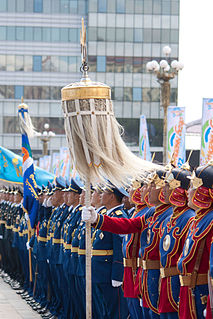 W
WThe Crimean Khanate, own name — Great Horde and Desht-i Kipchak, in old European historiography and geography — Little Tartary was a Crimean Tatar state existing from 1441 to 1783, the longest-lived of the Turkic khanates that succeeded the empire of the Golden Horde. Established by Hacı I Giray in 1441, it was regarded as the direct heir to the Golden Horde and to Desht-i-Kipchak.
 W
WThe territory of Crimea, previously controlled by the Crimean Khanate, was annexed by the Russian Empire on 19 April [O.S. 8 April] 1783. The period before the annexation was marked by Russian interference in Crimean affairs, a series of revolts by Crimean Tatars, and Ottoman ambivalence. The annexation began 134 years of rule by the Russian Empire, which was ended by the revolution of 1917.
 W
WAzov, formerly known as Azoff or Azak, is a town in Rostov Oblast, Russia, situated on the Don River just 16 kilometers (9.9 mi) from the Sea of Azov, which derives its name from the town. Population: 82,937 (2010 Census); 82,090 (2002 Census); 80,297 (1989 Census).
 W
WBakhchysarai is a town in central Crimea, a territory recognized by a majority of countries as part of Ukraine and annexed by Russia as the Republic of Crimea. It is the administrative center of the Bakhchysarai Raion (district), as well as the former capital of the Crimean Khanate. Its main landmark is Hansaray, the only extant palace of the Crimean Khans, currently open to tourists as a museum. Population: 27,448 .
 W
WBilohirsk or Belogorsk is a town and the administrative centre in Belohirsk Raion, one of the raions (districts) of the Autonomous Republic of Crimea, a territory recognised by a majority of countries as part of Ukraine and annexed by Russia. Population: 16,354 .
 W
WFor over three centuries, the military of the Crimean Khanate and the Nogai Horde conducted slave raids primarily in lands controlled by Russia and Lithuania-Poland as well as other territories. These raids began after Crimea became independent about 1441 and lasted until the peninsula came under Russian control in 1774.
 W
WEski Yurt — a historical settlement in South West Crimea, presently a historical quarter in the western part of Bakhchisaray. Its name derives from the Crimean Tatar language terms for "old settlement" or "old headquarter" and "felt tent".
 W
WThe House of Giray, also Girays, were the Genghisid/Turkic dynasty that reigned in the Khanate of Crimea from its formation in 1427 until its downfall in 1783. The dynasty also supplied several khans of Kazan and Astrakhan between 1521 and 1550. Apart from the royal Girays, there was also a lateral branch, the Choban Girays . Before reaching the age of majority, young Girays were brought up in one of the Circassian tribes, where they were instructed in the arts of war. The Giray khans were elected by other Crimean Tatar dynasts, called myrzas (mırzalar). They also elected an heir apparent, called the qalgha sultan. In later centuries, the Ottoman Sultan obtained the right of installing and deposing the khans at his will.
 W
WThis is a list of khans of the Crimean Khanate, a state which existed in present-day southern Ukraine from 1441 until 1783. Crimean Tatars, although not a part of the Ukrainian ethnos, are deeply interconnected, having ruled a large part of modern Ukraine over the span of 300 years.
 W
WThe Crimean Khanate, own name — Great Horde and Desht-i Kipchak, in old European historiography and geography — Little Tartary was a Crimean Tatar state existing from 1441 to 1783, the longest-lived of the Turkic khanates that succeeded the empire of the Golden Horde. Established by Hacı I Giray in 1441, it was regarded as the direct heir to the Golden Horde and to Desht-i-Kipchak.
 W
WMuravsky Trail or Murava Route was an important trade route and an invasion route of the Crimean Nogays during the Russo-Crimean Wars of the 16th and early 17th centuries. As described in the Book to the Great Chart of Muscovy (1627), the route went north from the Tatar fortress of Or Qapı (Perekop), the gateway of the Crimean peninsula, east of the Dnieper to the Russian fortress of Tula, 193 km south of Moscow.
 W
WOchakiv also known as Ochakov (Ukrainian: Очаків, Russian: Очаков, Crimean Tatar: Özü, Romanian: Oceacov and Vozia, and Alektor is a small city in Mykolaiv Oblast of southern Ukraine. Serving as the administrative center of Ochakiv Raion, the city itself does not belong to the raion and is designated as a city of regional significance. Population: 14,036
 W
WThe Treaty of Jassy, signed at Jassy (Iași) in Moldavia, was a pact between the Russian and Ottoman Empires ending the Russo-Turkish War of 1787–92 and confirming Russia's increasing dominance in the Black Sea.
 W
WA tug or sulde is a pole with circularly arranged horse or yak tail hairs of varying colors arranged at the top. It was historically flown during the period of the Mongol Empire, and later adopted in derived Turco-Mongol and Turkic khanates and the Ottoman Empire. In the 17th century, it was also adopted by Slavic cavalry, under the name bunchuk. It is still used by some units of the Polish military.
 W
WMirza Tughai Bey, Tuhay Bey sometimes also spelled as Tugai Bey was a notable military leader and politician of the Crimean Tatars.
 W
WYeni-Kale is a fortress on the shore of Kerch Strait in the city of Kerch.
 W
WYevpatoria is a city of regional significance in Western Crimea, north of Kalamita Bay. Yevpatoria serves as the administrative center of Yevpatoria Municipality, one of the districts (raions) into which Crimea is divided. Population: 105,719 .
 W
WZincirli Madrasa is a madrasa, built of stone by Meñli I Giray in 1500 near Bakhchisarai, Crimea.